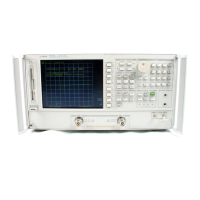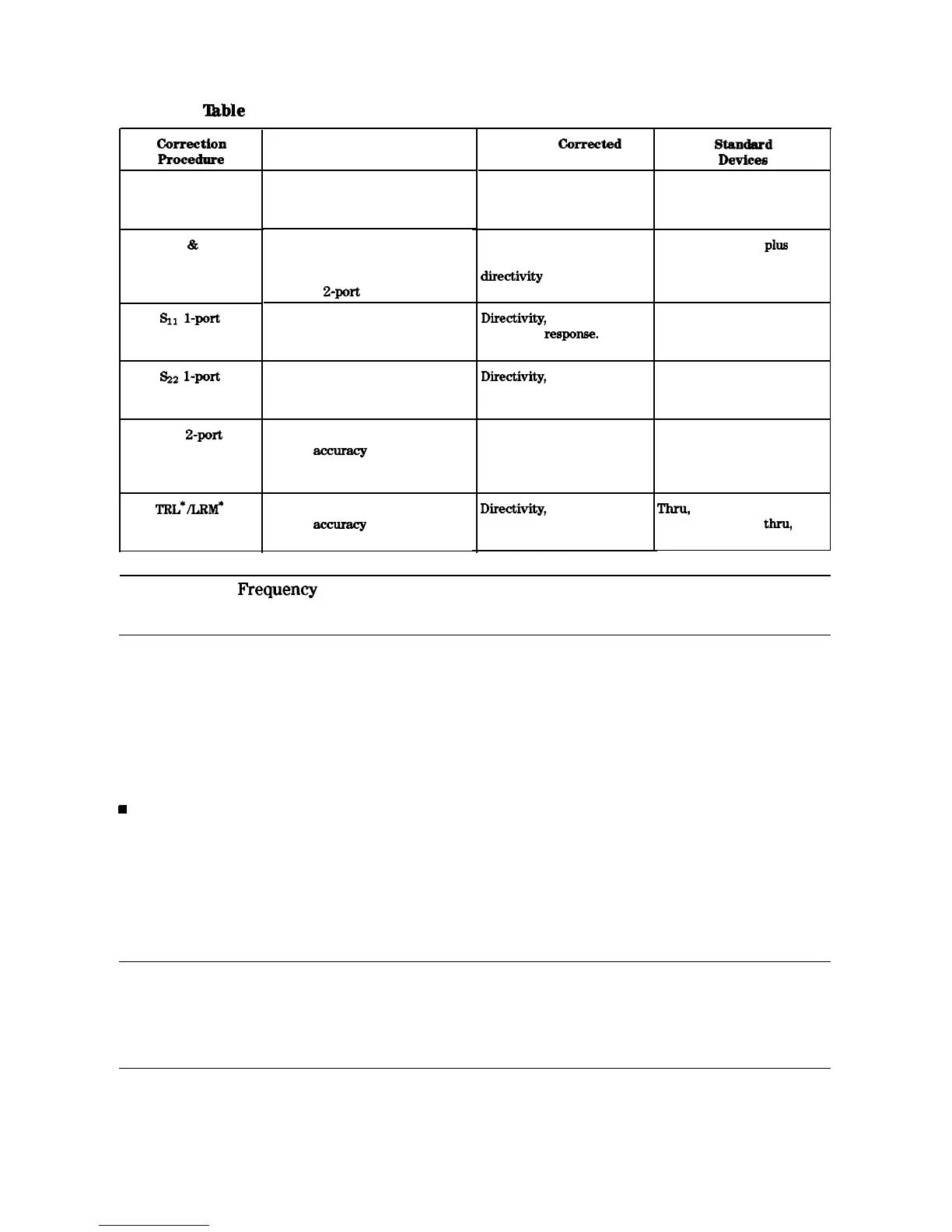‘I&ble
5-2. Purpose and Use of Different Error-Correction Procedures
ca-rection
Procednre
Response
Response & isolation
sl1l-pofi
522
l-port
Full
2-port
!lXL*/LR~
Corresponding
Measurement
Transmission or reflection
measurement when the highest
accuracy is not required.
Transmission of high insertion loss
devices or reflection of high return
loss devices. Not as accurate as
l-port or
2-port correction.
Reflection of any one-port device
or well terminated two-port
device.
Reflection of any one-port device
or well terminated two-port
device.
Transmission or reflection of
highest
t3cmraq
for two-port
devices.
Transmission or reflection when
highest
acauacy
is not required.
Errors
Carmeted
Frequency response.
Frequency response plus
isolation in transmission or
djrectivity in reflection.
Dire&v&y,
source match,
frequency
response.
Directivity,
source match,
frequency response.
Short and open and load.
Directivity, source match,
load match, isolation,
frequency response,
forward and reverse.
Short and open and load and
thru. (2 loads for isolation)
Dire&vi&
isolation,
Thru,
reflect, line, or line,
frequency response.
reflect, match, or
thru,
(forward and reverse)
reflect, match.
Stamkrd
DWiCeS
Thru for transmission, open
or short for reflection.
Same as response
plus
isolation standard. (load)
Short and open and load.
Note
F’requency
response calibration is not as accurate as other calibration methods
Error-Correction Stimulus State
Error-correction is only valid for a specific stimulus state, which you must select before you
start a correction. If you change any of the following parameters, you will invalidate the
correction and the analyzer will switch the correction off (unless the interpolated error
correction feature is activated):
n frequency range
w
number of points
n
sweep type
The error-correction quality may be degraded (Cor changes to CA), if you change the following
stimulus state parameters:
n
sweep time
n
system bandwidth
n output power
Note
If you activate averaging, the analyzer may increase the sweep time if more
time is needed to calculate the averages. If the sweep time changes, you will
see Cor change to CA. The number of averages does not affect a sweep cycle
time. Therefore, if you use averaging for error-correction, leave it on for the
measurement and set the averaging factor to 1, for a faster sweep.
Optimizing Measurement Results 5-5

